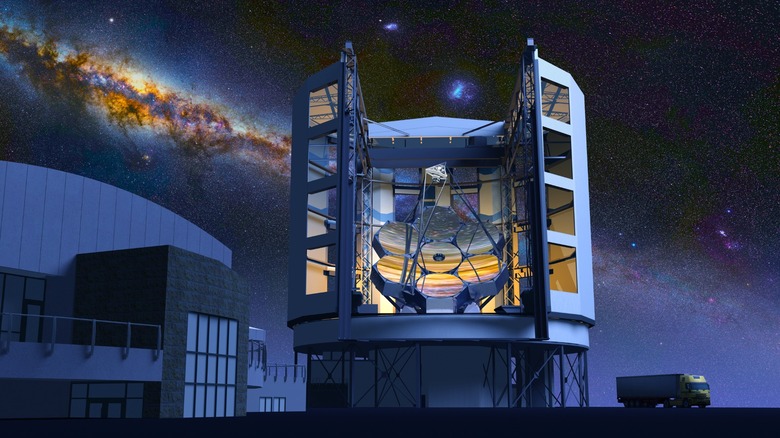The Giant Magellan Telescope: Everything We Know So Far
Man has been using hardware instruments to search the vastness of outer space since Galileo Galilei first pointed his telescope skyward in the early 1600s. Initially comprised of a single concave eyepiece aligned with a single convex lens, Galilei's first telescopic device magnified objects by a factor of three and continued to iterate all the way to an instrument capable of magnifying objects 20 times. Over the centuries, the humble telescope evolved from that simple tube with two small lenses to the 100-inch Hooker reflecting telescope at the Mount Wilson Observatory, the Hubble Space Telescope, and the Giant Magellan Telescope (GMT).
The Giant Magellan Telescope is the latest Extremely Large Telescope (ELT) to be built in Chile, in the Atacama Desert, the driest non-polar desert in the world. The intended build site is part of the Las Campanas Observatory, a remote collective of buildings and instruments that has access to an estimated 300 nights of clear skies per year. Hard rock construction of the telescope site began in August 2018 and was completed in March 2022.
The Giant Magellan Telescope is being constructed in Chile
When completed, the GMT will stand 65 meters high and include seven of the largest parabolic telescope mirrors ever built. Each 27.6-foot (8.4-meter) diameter mirror has an 83.33-foot (25.4-meter) mirrored surface, weighs 18 metric tons, and takes four years to build. Each one is polished for approximately two years and is so smooth that any blemishes are less than one-thousandth the width of a human hair. All seven mirrors, arranged in a distinctive flower shape, will be 80 feet across and provide more than 368 square meters (3,691 square feet) of light-collecting area.
The Giant Magellan Telescope is 50 million times better at gathering light than the human eye, with a resolution so great that it's capable of seeing the engraved torch on the back of a dime from nearly 100 miles away. Additionally, it will have the widest field of view of any other Extremely Large Telescope and be the only 30-meter class telescope with ground-layer adaptive optics.
Set to open sometime in the early 2030s, with a cost of well over $2 billion, the Giant Magellan Telescope will be ten times more powerful than the Hubble Space Telescope and have four times the imaging resolution of the James Webb Space Telescope. With this kind of imaging power, the scientific community hopes to find signs of life, Earth-like planets in the Goldilocks Zone, uncover the mysteries of dark matter and black holes, and find answers to our cosmic origins.
